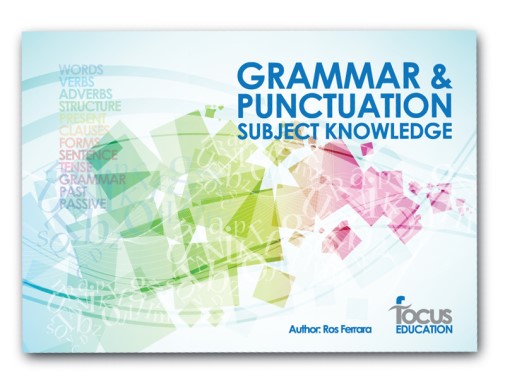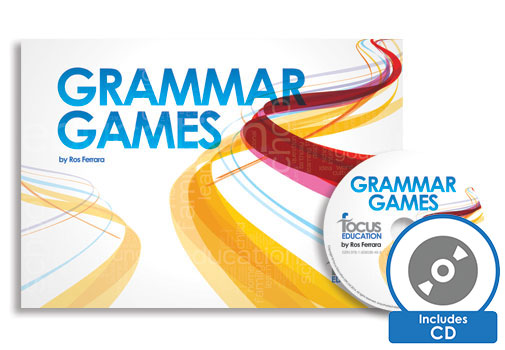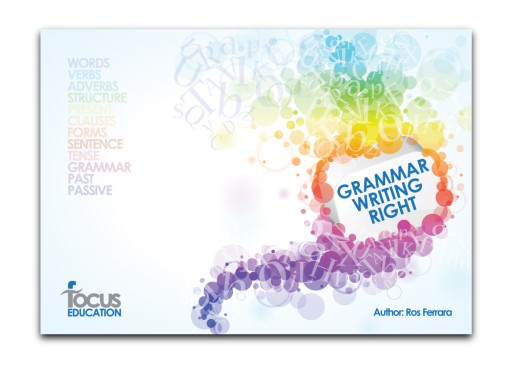
Why should we teach grammar? Well, we now have an intense focus on grammar within the statutory English curriculum, so that is certainly one reason! Much more than that, however, is that grammar is about language. It is about how words are chosen, how sentences are written, how effective detail is added and how texts are crafted to make our meaning clear and to interest and engage a reader. Why would we not want to teach that?
Testing Grammar
Everyone has an opinion about the grammar element of the English curriculum. Much of the comment focuses on negative aspects; the fact that children have to learn identified terminology and also undertake a test at the end of both Key Stages. Whatever our feelings about testing, it is unlikely to go away. Certainly, there are elements which the children will need to know only to answer test questions and will not make a difference to the quality or impact of their writing; for example, identifying the subjunctive mood, determiners and the present perfect tense. To achieve well in the test, children must be familiar with the terminology and they must be able to use their grammatical knowledge to respond to de-contextualised questions. However, this gives no accurate or useful information about how well they write. Accepting this and concentrating on teaching the grammar in context, for a purpose and to improve writing is a far better direction to take. If we teach it well, for a purpose, and give children time to play and experiment with the language, they will perform well in the tests. They will just need some practice in how to take a test! The aspects that need to be secured only for the test can easily be taught, consolidated and reviewed using grammar games and whiteboard work.
Grammatical Terminology
So, let’s put that to one side, embrace the curriculum and get on with making writing amazing! The opportunity we have is to show children that there are no rules or formulas for “good” writing. The best place to start is with high quality texts. The grammatical terminology gives us a shared language to talk about the effect a writer has on us when we read and how they paint a picture with words. From “The Naughty Bus “to “The Hobbit”, books offer not only opportunities to talk about the writer’s craft, but also to provide models for children’s own writing. The impact of this can be clearly seen where a Year 1 child’s sequence of mischievous events based on “The Naughty Bus” and the final admonitory comment captures the style and voice of the author: We were disappointed in the naughty bus. He never listened like good children.
One of the most memorable moments of this year was when a Year 3 boy brought me the narrative he had written based on “The Iron Man”. The writing was fantastic – well-crafted with thoughtful and considered editing. Before he read me the story, he said, “I tried really hard. I know I broke some of the grammar rules, but I wanted to write like Ted Hughes.” You have to know the rules to break them!
Within the learning sequence building towards a sustained outcome, there will be days which focus entirely on teaching grammar. The grammar taught will be what is needed for the outcome. Children will have time to explore and develop precise and effective word choices – goodbye to the string of adjectives and weak verbs! They will have time to experiment with sentences and play with detail, building sequences or paragraphs – farewell to paragraphs which contain a menu of sentence types! Confidence and skills will be built. Grammar games can be played to review, consolidate, revisit or introduce learning.
Grammar Rules
Grammar helps us to write effectively, but also to write accurately. Punctuation is an essential element of this as it marks grammatical boundaries and clarifies meaning. It is nothing to do with breathing or pausing. Rather, we pause because the punctuation is there! Punctuation needs to be taught with the grammatical feature it marks. Year 5 and 6 teachers are currently struggling with the dreaded comma because children do not understand where it marks a grammatical boundary. Comma splices abound in their writing! Draw up a list of comma rules with your class and have a zero tolerance proof reading process in place. Get the children to check if they have used commas where they should be used. Then check if they have used them anywhere else – usually instead of a full stop!
Good writing is about using what is needed to communicate the writer’s intended message. Grammar is all about sentences and words and, taught well, will improve writing. It empowers children allowing them to make choices and create effects and control their writing. Working with grammar allows children to communicate what they want to say effectively. So, let’s deal with the elements of the curriculum that are just about the test and recognise the power of having a toolkit of grammatical features and techniques to create effective and purposeful writing. It is up to us to make sure that we are showing children how to craft writing to engage, interest and entertain the reader
Continue the Conversation
If you still have questions about grammar in the English curriculum, join me on twitter @FocusRosf or for related resources and publications, get in touch with the Focus Education office on 01457 821 818.
Related Publications
Ros has over 30 years’ experience working in teaching and leadership roles in schools, both nationally and internationally, as well as leadership roles within Local Authority advisory teams.
With extensive experience in all aspects of school improvement and contexts, as well as specialisms in English and EAL, Ros has developed inspirational, creative resources and training which puts English at the heart of the curriculum.









